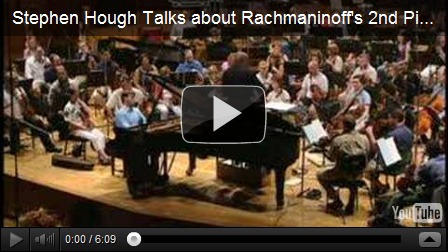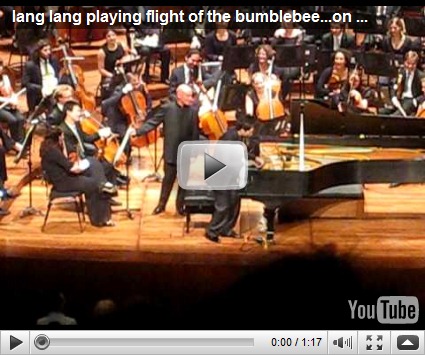The Floating Palace was a circus showboat that played up and down the Mississippi River just before the Civil War. It was an extremely elegant barge, pulled by two paddle wheelers with a full circus ring inside.
So it said in the program that I received when I walked into Powell Hall last night. You can’t really go wrong attending The Saint Louis Symphony on a Saturday night and it was a program full of my favorites: parts of Copland’s Rodeo; Grieg’s In the Hall of the Mountain King; a series of pieces from Bizet’s Carmen; and Falla’s Fire Dance among others.
But as we headed down the aisle to find “Orchestra Center, Row F”, we knew it wasn’t going to be the usual “what a great night at the Symphony” kind of night. It was going to be something we had never experienced before.
For one thing, Row F is, as you might imagine, the 6th row at Powell Hall. But not last night. Last night they had removed rows A, B, and C and didn’t sell any seats in rows D and E. So we were, in effect, in the front row. And we were almost directly under the high wire where the Flying Wallendas were going to perform later in the show. That’s right, the Flying Wallendas were going to perform with the Symphony right over our heads. I looked at the woman next to me and she said, “Oh yeah, I’m VERY nervous.” I looked at my sister and she said, “If they drop those pole things, they’ll probably kill us.” I said, “At last we’ll break their fall.”
St. Louis has it’s own local circus company, Circus Flora, that performs each year in a one ring circus tent set up on the parking lot of Powell Hall in June after the Symphony season is over. It’s a lot of fun to go see, a traditional one ring circus where you can almost reach out and touch the performers. The clowns circulate among the audience and you probably could hear the breaths of the performers if the Circus band weren’t playing so loud.
To celebrate its 25th anniversary, Circus Flora got itself a bigger band. It teamed up with the Saint Louis Symphony Orchestra to do a circus right there on the stage of Powell Hall. We weren’t sure what to expect. Where was the orchestra (which usually takes up the entire stage) going to sit and where would the Circus performers perform if there was no ring? Well, the Symphony was on raised platforms on the back three quarters of the stage and the Circus used the front quarter of the stage and the space above it and above the first few rows of the audience.
It was a great night, one of the best things I’ve ever seen. First, the Symphony was, as usual, wonderful. I have no idea how guest conductor Alistair Willis got this gig. I searched his bio for any sign that he’d been in a Circus Band in a previous life but, if he had, it was scrubbed from his official history. He seemed to have a good rapport with the Orchestra and they sounded sharp.
The choice of music for each act was usually spot on. Of course, the Symphony is committed to playing the entire piece and, unlike the Circus Band, can’t suddenly end a piece to make the music and the performer end together. But the Circus had made provision for that and had “other” things to go on after the performer ended their spot.
Circus Flora usually puts together a loose narrative that ties together all the acts and last night was no different. The circus performers were on The Floating Palace, performing up and down the Mississippi. One of the performers was pining for a girl he had met in St. Louis. There were three stowaways that made appearances now and then. And of course everyone lived happily ever after. But mostly it was all about the performances.
Where to begin. There was, of course, juggling – performed to Stravinsky’s Circus Polka. There was a duet of two female performers hanging from a big ring usually only by their toes (it seemed) – performed to Copland’s Corral Nocturne from Rodeo. Aerialist Una Mimnagh did a ballet like performance holding onto a rope high above the stage – performed to selections from Falla’s Three Cornered Hat.
There were no horses at this circus, unlike the summer version, but the dog act was back and they are one of my favorites. Johnny Peers & the Muttville Comix performed to selections from Kabelevsky’s The Comedians. Each dog in the large menagerie has been rescued from a pet shelter and none of them match any of the others. But if you’d love to see a Bassett Hound riding a skateboard, this is the act for you.
Another favorite of mine are the St. Louis Arches, who are a young troop of local acrobats. I feel that I’ve seen these kids grow up and every year they get better and better. Last night was the best I’ve ever seen them.
Aleysa Gulevich wowed the audience with hula hoops – performing to music from Bizet’s Carmen. She started with one hula hoop and by the end of her sultry performance she was covered in hula hoops.
Duo Voltart was new to St. Louis, performing here for the first time and they were a wow. Their act, performed to Falla’s Fire Dance, was a combination of dance moves and breathtaking acrobatic lifts. Sitting so close, we could see every muscle in Damien Boudreau’s arms quiver as he held Genevieve Cliché in unbelievably difficult poses and lifts.
That wow was matched by arielists Andrew Adams and Erika Gilffether who performed equally difficult poses and holds high above the stage using ariel straps. Their music was the beautiful ballade form Sibelius’ Karelia Suite.
And there were, of course, a clown and also a rope spinning artist. But the hilight of the evening was, as always, the Flying Wallendas/Great Wallendas who did their high wire act right above our heads using bicycles no less. They did not attempt a large pyramid, but they did have two members on bikes with a chair on a pole between them holding another member of the act. Without the “use of nets or safety devices of any kind”. I held my breath the entire time.
All in all it was one of the best nights I’ve ever had at any venue and I hope they repeat this every year.





